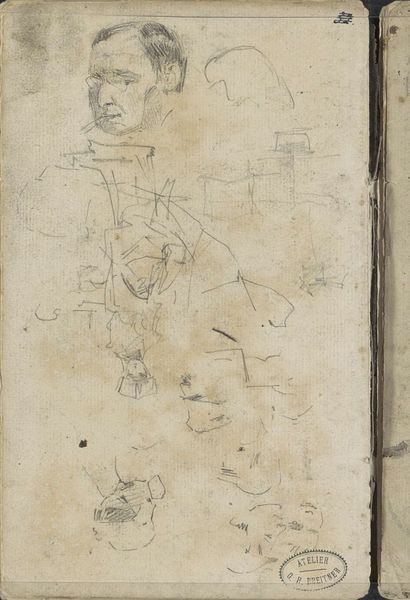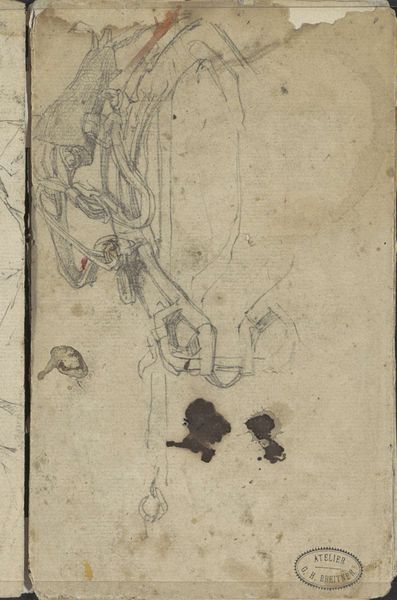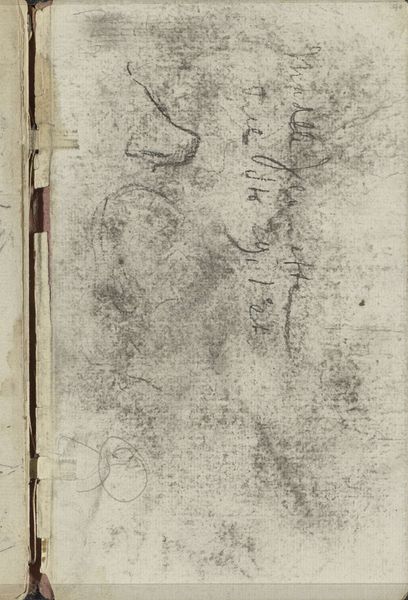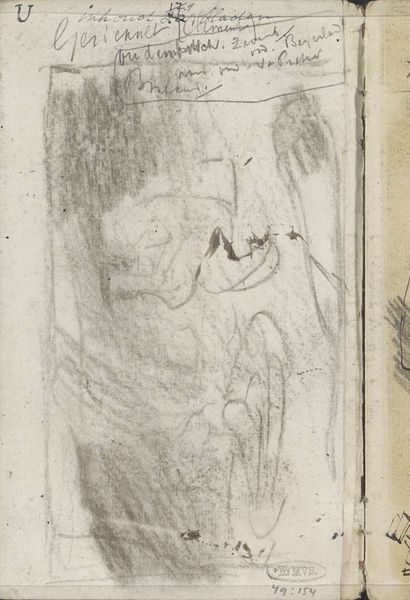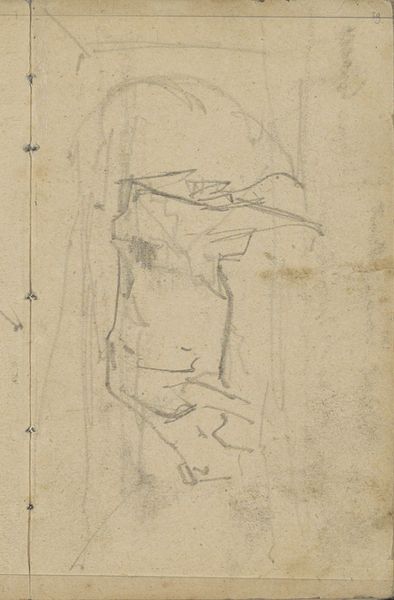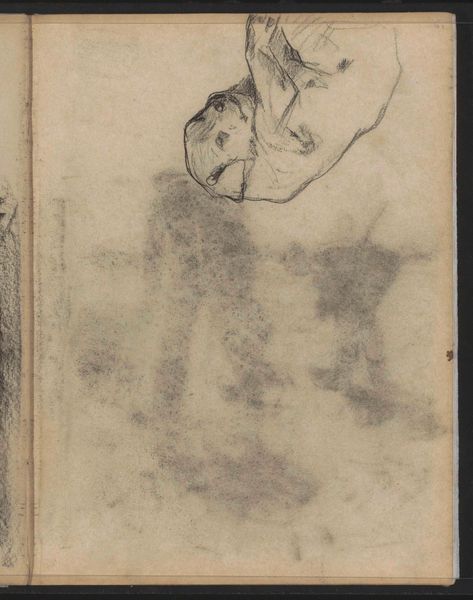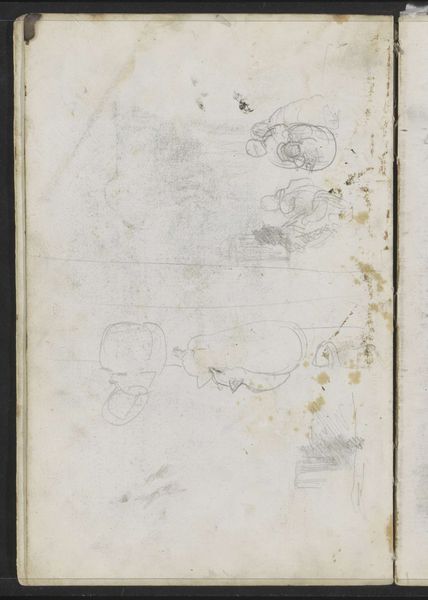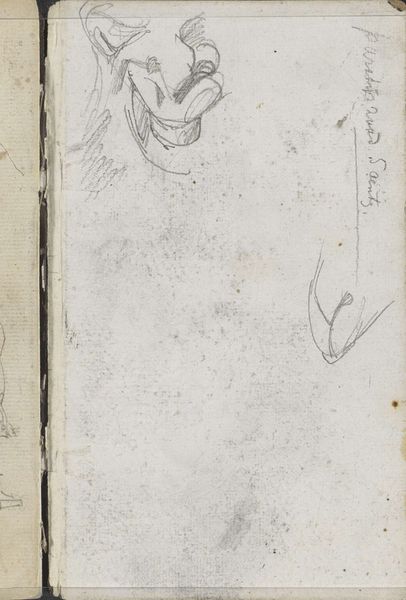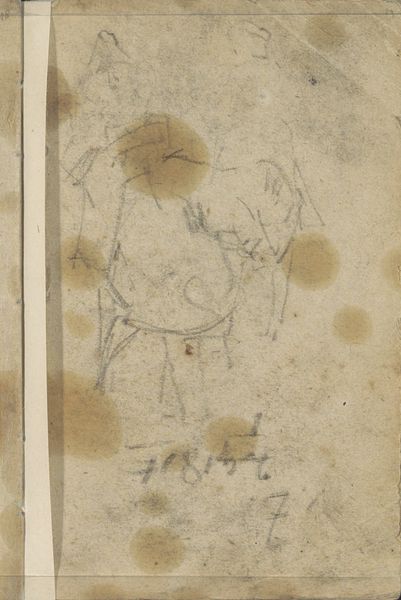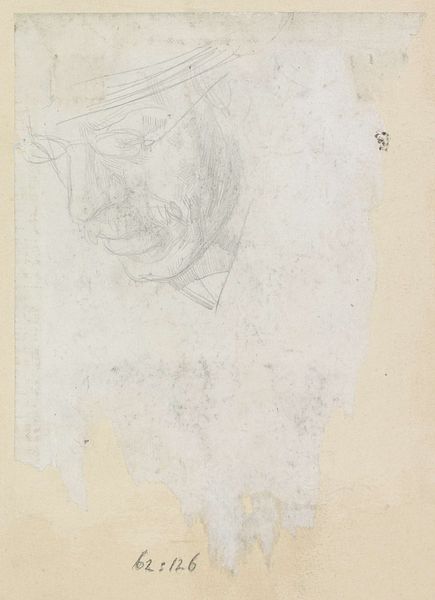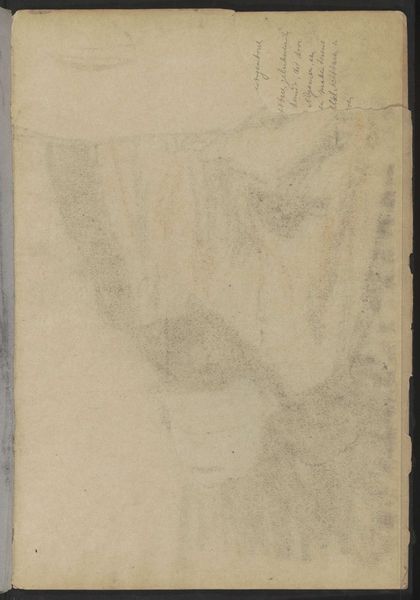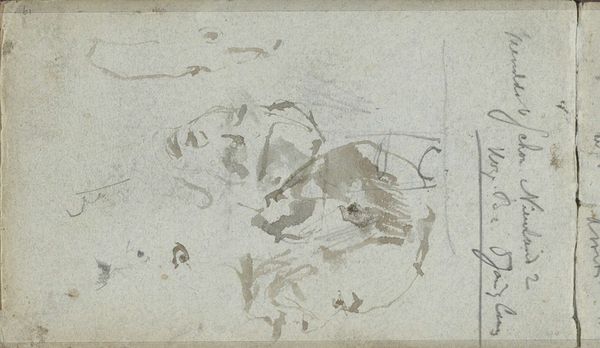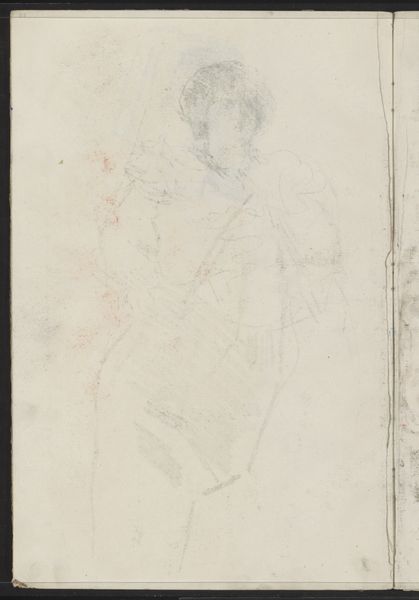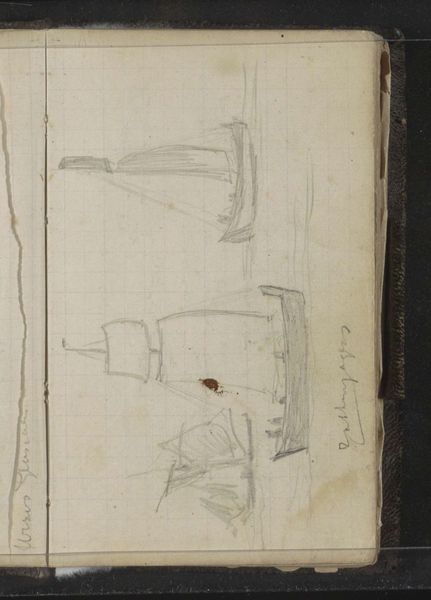
drawing, pencil
#
portrait
#
drawing
#
landscape
#
coloured pencil
#
pencil
#
realism
Copyright: Rijks Museum: Open Domain
Editor: Here we have George Hendrik Breitner's "Soldaten en een dier, mogelijk een hond" – that translates to "Soldiers and an animal, possibly a dog"— made with pencil around 1880-1882. It's at the Rijksmuseum. It’s quite an unassuming work, really. What strikes me most is the rough sketch quality, almost like a quickly jotted down memory. What do you see in this piece? Curator: Immediately, I’m drawn to the materiality. Look at the paper itself. Notice the staining, the thinness. This isn't a pristine surface intended for display, it's a sketchbook page, meant for process, for working out ideas. Consider the labour implied, the repetitive act of sketching that allows for the refinement of form and ultimately allows Breitner to achieve a higher degree of representation later on. The ephemerality is interesting, considering the grand theme of soldiers, possibly engaged in warfare. Is the act of quickly recording visual information from his lived environment itself significant? Editor: That's an interesting perspective! I hadn't considered the materiality as much, I was mostly thinking of the subject matter and the kind of “realist” portrayal of military life. But I see what you mean—it emphasizes the artist's hand and his direct experience. Was Breitner perhaps making some political statement by emphasizing process, rather than a finished, polished artwork? Curator: Precisely! It challenges the conventional hierarchy. What constitutes ‘finished’ art? And by using commonplace materials, he potentially democratizes the process of artistic creation. He is perhaps critiquing art's association with wealth. Think about it: by embracing the provisional and readily available, he might be subtly questioning notions of artistic preciousness and accessibility. Can we divorce process from meaning here? Editor: That really reframes how I see the piece. I was focused on the “what,” but now I’m much more intrigued by the “how” and “why.” It brings a totally different layer to it. Curator: Indeed. Understanding the materials and process opens up a broader consideration of the social and economic factors underpinning its creation, which in turn illuminates how art can serve purposes far beyond mere aesthetics.
Comments
No comments
Be the first to comment and join the conversation on the ultimate creative platform.
